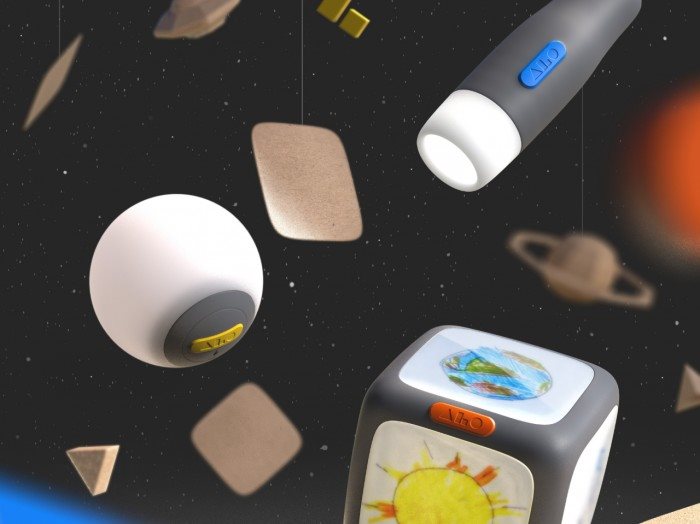Here are the five shortlisted candidates for the Dundeed competition
In April Design Indaba founder, Ravi Naidoo, gave a keynote speech at the the 13th International Conference of the European Academy of Design (EAD). The event was hosted by the University of Dundee and co-chaired with Imagination Lancaster, Lancaster University.
Following the talk, the EAD collaborated with Design Indaba to set the challenge to design research teams around the world to creatively engage with the United Nations’ Sustainable Development Goals.
The 2019 theme ‘Dundeed’ is a play on words combining the City of Dundee and the act of doing a good deed.

This new initiative marks the first of what is intended to be an ongoing collaboration between Design Indaba, the largest design conference in the world and EAD, one of the leading international platforms for design research.
The challenge is supported by investment from entrepreneurial platform Elevator Dundee, Centre of Entrepreneurship. The winning entry will receive £5,000.
Today we are proud to announce the five shortlisted candidates:
1. Caroline Hermenegildo with Have A Seat

A distributive school furniture design proposal aiming to empower a rightful pedagogic learning environment for students in sub-Saharan Africa rural schools, contributing and responding to the fourth goal of the sustainable development goals, quality of education.
The design takes into consideration facilitation of agency over the local production and an effective distribution by simplifying the making through the use of linear and geometrical mathematical cuts and fittings, able to be produced more eighth in a hardwood timber plank or in a hard-wood plywood sheet material.
Regarding the distribution, a flat-pack design reduces carbon emissions and consequently time, effort and economical investment allowing effective and quantitive transportation, of furniture to students and schools to where the design is easily assembled. Beyond this, the design allows an adaptation to different conditions by presenting incorporation of three ergonomic sizes of heights for diverse age groups from 7 to 17, and therefore, an individual or double-length set’s regarding levels of overcrowding issues.
Consequently, suggesting alternative assembly joinery, apart from screws and nails, reutilising a weaving craft lifestyle into a social inclusion process. In short, an object of design that englobes and brings a working concept, in development, of effectiveness.
2. Victoria Frederica Stoch

Approximately 70% of the 37 million people currently living with HIV-AIDS globally are in sub-Saharan Africa. One of the prohibitive factors standing in the way of eradicating the disease is maladherence to antiretrovirals (ARVs).
Forgetfulness is one reason that HIV+ patients do not adhere to their treatment. It is difficult to remember to take medication daily, especially when the condition requires lifelong treatment. Key to managing the disease is finding simple, cost effective and innovative strategies/ approaches to increasing treatment adherence.
Her solution is a sticker that can be added to ARV packaging, which assists patients in tracking their progress throughout their monthly course of medication. Patients take a pill, scratch off the day’s metallic coating and are rewarded with a ‘tick’ that indicates they have taken their medication.
This solution is based on the same principle that increased treatment adherence to oral contraceptives when they were repackaged in the 1960s.
3. Pragya Sharma

Many women in the urban areas, who are too stuck in the unconventional setup of their families or are not allowed to work outside, before or after marriage or are in their older age, widows, etc. These women are seasoned in craft skills like knitting, crocheting, mending, darning, embroidery
etc.
Untapped is a web-based app model (skill-sourcing app) connecting women to designers or brands. They can select the key skills they possess, it gets communicated to the person looking for the skill and it builds on from there. In a seamless way, the woman works from home, making an earning and building a sense of independence and confidence that comes along.
There is also a provision of learning and developing the skills with the use of videos, workshops and volunteers.
4. Debalina Bera with The Welcome Tent

The Welcome Tent project, an ex-army catering tent repurposed for peace, is used as a space to bring uprooted people together over food, cooking ‘recipes of HOPE’ with a global community who are acting with courage and determination, despite the authoritarian conditions which are criminalising solidarity and human rights.
Food is a universal language. Food is a basic life necessity and Human Right. 12 of the 17 Sustainable Development Goals feed into Food and Nutrition (WHO).
Sharing food in The Welcome Tent is a catalyst for people and communities to find a voice, a peaceful process for building trust and reconnection, restoring equitable participation for all.
A dynamic service offering, designed to be agile in nature, with a strong sense of purpose, creating a space for cultural exchange and acceptance, a sense of belonging amongst displaced local communities.
5. Alejandro Mandrio with ALO

ALO is an strategic design proposal that aims for social impact. It explores how we can build healthier and more sustainable futures by stimulating individuals at early stages and promoting social caring actions that transform the collective mindset.
It is based on co-creation and engagement with families. It finds commonalities globally and honours diversity locally.
ALO reduces inequalities and offers learning opportunities for all kids at Early childhood, time when children develop both physical and sensorially, building their brain connections.
It consists of a platform, a service and 3 products: An online portal to inform families and connect them through social media, public healthcare and schools. A weekly subscription to DIY challenges to build together in family custom games and upgrades to keep engagement.
And finally, three stimulating toys (Observe, Seek and Capture) that will aid children (1-3yo) develop all 6 sensory and functionary areas from Doman’s developmental profiles. All this while playing!
For more:
www.designindaba.com

















